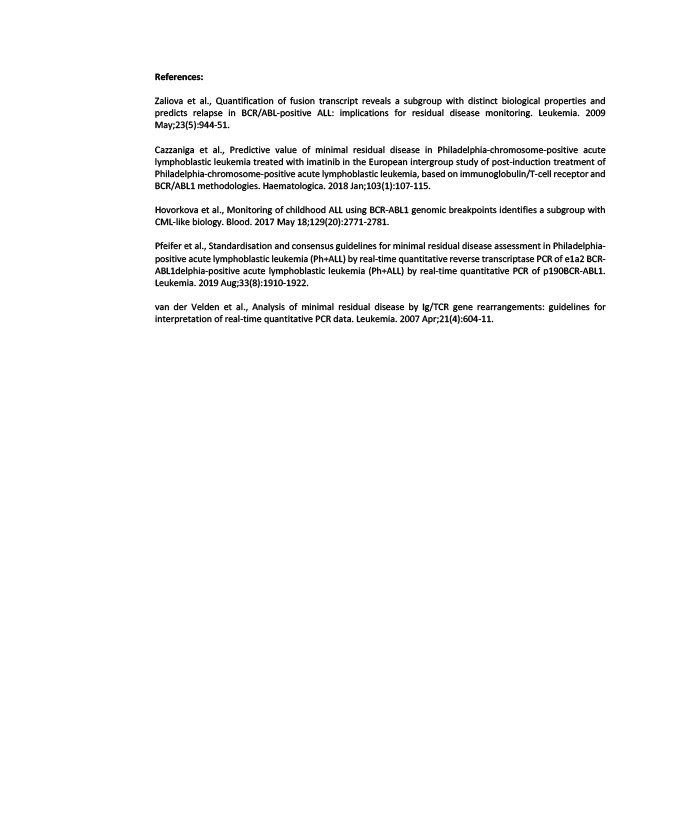
References:
Zaliova et al., Quantification of fusion transcript reveals a subgroup with distinct biological properties and
predicts relapse in BCR/ABL-positive ALL: implications for residual disease monitoring. Leukemia. 2009
May;23(5):944-51.
Cazzaniga et al., Predictive value of minimal residual disease in Philadelphia-chromosome-positive acute
lymphoblastic leukemia treated with imatinib in the European intergroup study of post-induction treatment of
Philadelphia-chromosome-positive acute lymphoblastic leukemia, based on immunoglobulin/T-cell receptor and
BCR/ABL1 methodologies. Haematologica. 2018 Jan;103(1):107-115.
Hovorkova et al., Monitoring of childhood ALL using BCR-ABL1 genomic breakpoints identifies a subgroup with
CML-like biology. Blood. 2017 May 18;129(20):2771-2781.
Pfeifer et al., Standardisation and consensus guidelines for minimal residual disease assessment in Philadelphia-positive
acute lymphoblastic leukemia (Ph+ALL) by real-time quantitative reverse transcriptase PCR of e1a2 BCR-ABL1delphia-
positive acute lymphoblastic leukemia (Ph+ALL) by real-time quantitative PCR of p190BCR-ABL1.
Leukemia. 2019 Aug;33(8):1910-1922.
van der Velden et al., Analysis of minimal residual disease by Ig/TCR gene rearrangements: guidelines for
interpretation of real-time quantitative PCR data. Leukemia. 2007 Apr;21(4):604-11.